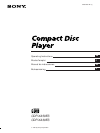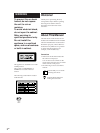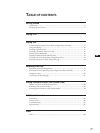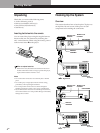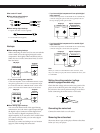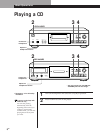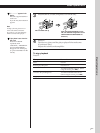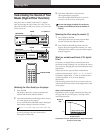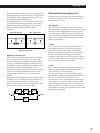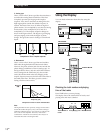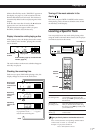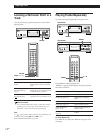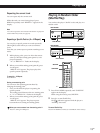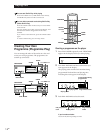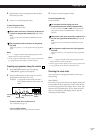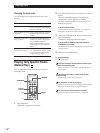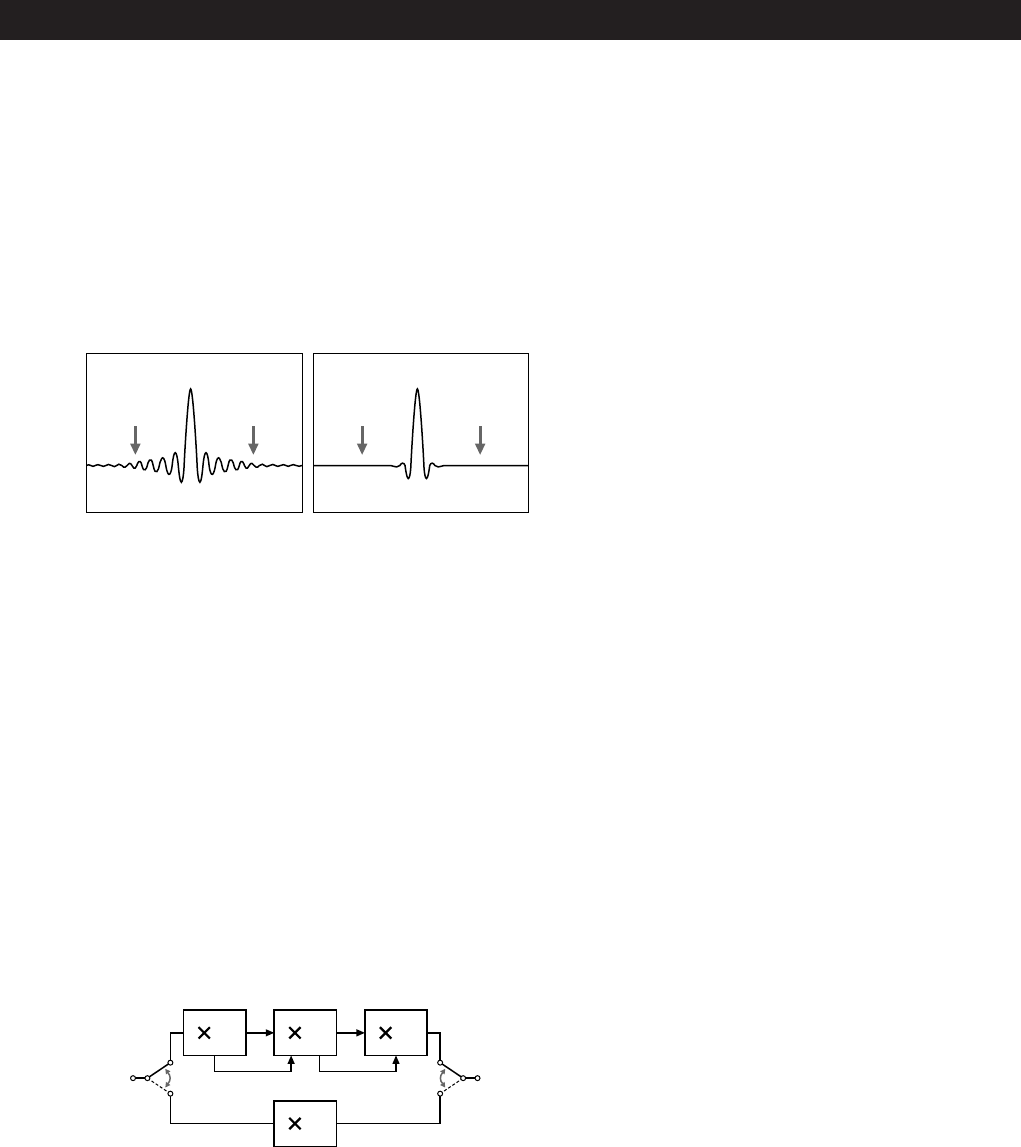
Playing CDs
9
EN
Cascade type and direct type
There are two methods of digital filter oversampling:
the cascade type and direct type. The cascade type
multiplies the signal by eight in three stages, and the
direct type multiplies the signal by eight in one step.
Cascade filters have a high calculation efficiency, and
can realise steep, high-precision sharp roll-off
characteristics. Moreover, the ICs in this player use the
full feed-forward (FF) method between each of the
stages to improve the accuracy of the information
transfer.
On the other hand, eightfold oversampling data can be
obtained in one step with direct filters and there is no
loss during transfer between calculation stages.
However, since such circuits are extremely large, this
player can only support slow roll-off filters.
2 2 2
8
Characteristics of each digital filter
The following are the settings and characteristics for
each of the five digital filters. Use this information to
select the filter you want.
STD: Standard
This is a sharp roll-off, cascade type filter. It has the
same characteristics as the digital filters that have long
been used in Sony’s high-end units and has a sharp
cutoff that reaches –120 dB at 24 kHz. This filter uses
the full feed-forward method between the calculation
stages and gives the sound a wide range and ample
spatial representation.
1: Spline
This is a slow roll-off, cascade type filter that uses a
cubic spline function for interpolation. The spline
function features smoother connections between
points, and among spline functions, the cubic filter is
the most straightforward. Ringing in the impulse
response for this filter is much lower than for a sharp
roll-off type filter. With this filter, the sound image is
clear and sound reproduction is smooth.
2: Plain
This is a slow roll-off, direct type filter. It features an
absence of quantization between the digital filter
output and the D/A converter input.
Direct type calculations are used within the digital
filter and the bit length for the digital filter output and
the D/A converter input are the same, so no
requantization noise is generated between the digital
filter and the D/A converter. This means that, of the
16-bit information taken from the disc, elements up to
20 kHz are input as far as the D/A converter without
any nonlinear operation. This reproduces a sound with
high clarity and strength.
Sharp roll-off filter
Slow roll-off filter
Pre-ringing Post-ringing Pre-ringing
Post-ringing
Comparison of impulse response for sharp roll-off filter
and slow roll-off filter
IN OUT
FF FF
Sharp roll-off filters steeply cut off the noise generated
during sampling over 22.05 kHz. This is a superior way
of completely reproducing signals below 20 kHz: the
basic principle behind digital audio.
On the other hand, slow roll-off filters cut off the noise
generated during sampling gradually, and are able to
hold pre-ringing and post-ringing (a kind of sound
smearing) in the impulse response signal to a
minimum.



